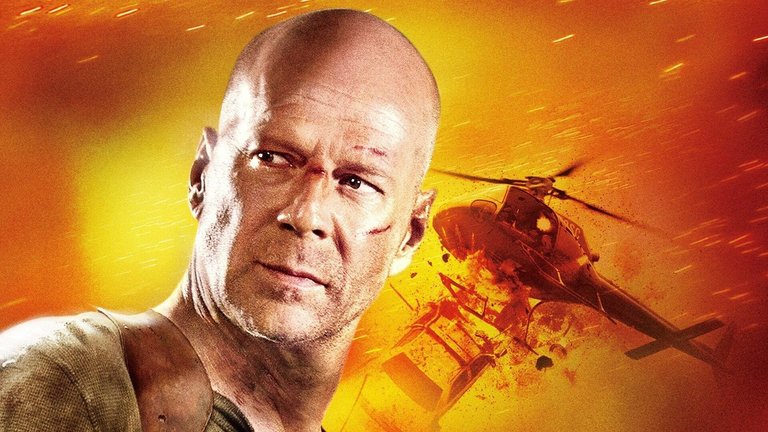Film Review: Live Free or Die Hard (2007)

Recent events in Lebanon have starkly illustrated how modern technology, upon which countless lives depend, can be weaponised to unleash apocalyptic levels of carnage and destruction. In light of these harrowing headlines, some of the opening scenes in Live Free or Die Hard (2007), directed by Len Wiseman, resonate with a disturbing relevance that its creators likely could not have envisioned when they conceived the film.
Live Free or Die Hard serves as the fourth instalment in the beloved Die Hard franchise, which began with the seminal 1988 action classic Die Hard. This entry, however, is loosely based on John Carlin's article "A Farewell to Arms," published in Wired magazine, which explores the implications of cyberwarfare. The film's title itself references New Hampshire's state motto, "Live Free or Die," suggesting a thematic exploration of freedom in the face of existential threats.
The plot kicks off when hackers across the United States are duped into activating hidden explosives within their devices. Among those who narrowly escape this fate is Matthew "Matt" Farrell (played by Justin Long), who finds himself under the protection of NYPD Detective John McClane (played by Bruce Willis). McClane is tasked with escorting Farrell to Washington D.C. for questioning as part of a nationwide cybercrime investigation. It soon becomes apparent that Farrell is a target for mysterious assassins because he possesses knowledge that could thwart a catastrophic cyberattack aimed at crippling the entire US infrastructure. As McClane strives to protect Farrell, he faces threats from Mai Lin (played by Maggie Q), a formidable henchwoman and lover of Thomas Gabriel (played by Timothy Olyphant), a former US Department of Defense cybernetics expert orchestrating the chaos.
Len Wiseman, best known for his work on the Underworld series, endeavours to remain faithful to the original Die Hard formula while introducing new elements that reflect contemporary concerns about cyberterrorism. This theme resonates deeply in a post-9/11 world where fears about digital vulnerabilities have become increasingly pronounced. Wiseman's attempt to balance nostalgia with innovation is commendable; however, it also raises questions about whether the film can truly capture the essence of what made the original so iconic.
In this instalment, McClane confronts adversaries who wield technological prowess and data manipulation skills far more destructive than any physical threat he faced in previous films. This shift highlights McClane's own struggles to adapt; he appears visibly aged and outmatched in a world where problems cannot simply be solved with a gun.
To navigate this new landscape, McClane is paired with Farrell, whose youthful intelligence complements McClane’s old-school physicality. This generational dynamic creates an engaging "buddy cop" relationship that adds depth to their interactions. While McClane embodies experience and resilience, Farrell represents a new breed of hero—one whose strengths lie in intellect rather than physical prowess.
However, Wiseman faces an inherent challenge: translating the complexities of cybercrime into visually compelling cinema. To counterbalance this difficulty, Live Free or Die Hard features numerous spectacular action sequences reminiscent of classic action films, including gunfights, car chases, and explosive confrontations. Yet at times, Wiseman's ambition leads him astray; one particularly outrageous moment involves McClane taking down a helicopter using nothing but a car—a scene that strays into absurdity and tests the limits of believability.
The cast delivers solid performances overall. Bruce Willis maintains his portrayal of McClane as a cynical yet effective action hero. His commitment to the role is evident; Willis even sustained injuries during filming, underscoring his dedication to performing stunts authentically despite the film's reliance on modern technology. Justin Long convincingly embodies Farrell, bringing both humour and heart to his character. Conversely, Timothy Olyphant's portrayal of Gabriel occasionally veers into over-the-top territory; while he presents an intelligent villainous persona, he lacks the menacing depth found in previous antagonists within the franchise. Similarly, Maggie Q’s characterisation as an action-packed femme fatale feels somewhat superficial.
The script introduces unnecessary complexity by adding Lucy, McClane’s estranged daughter (played by Mary Elizabeth Winstead). While Winstead delivers a commendable performance, her character ultimately serves as little more than a "damsel in distress," detracting from the film’s central narrative and introducing unconvincing hints of romantic tension between her and Farrell.
One notable aspect that has drawn criticism is the producers’ decision to adhere to PG-13 content limits—resulting in reduced violence and profanity compared to its R-rated predecessors. This shift has been met with mixed reactions from fans who feel that such restrictions dilute the franchise’s edge and intensity.
While Live Free or Die Hard emerges as a solid action film that successfully capitalises on its predecessors' legacy, it ultimately falls short of its full potential. The film performed very well at the box office but received lukewarm critical reception upon release; its reputation has since improved largely due to comparisons with its less favourably received sequel, A Good Day to Die Hard.
RATING: 5/10 (++)
Blog in Croatian https://draxblog.com
Blog in English https://draxreview.wordpress.com/
InLeo blog https://inleo.io/@drax.leo
Hiveonboard: https://hiveonboard.com?ref=drax
Rising Star game: https://www.risingstargame.com?referrer=drax
1Inch: https://1inch.exchange/#/r/0x83823d8CCB74F828148258BB4457642124b1328e
BTC donations: 1EWxiMiP6iiG9rger3NuUSd6HByaxQWafG
ETH donations: 0xB305F144323b99e6f8b1d66f5D7DE78B498C32A7
BCH donations: qpvxw0jax79lhmvlgcldkzpqanf03r9cjv8y6gtmk9